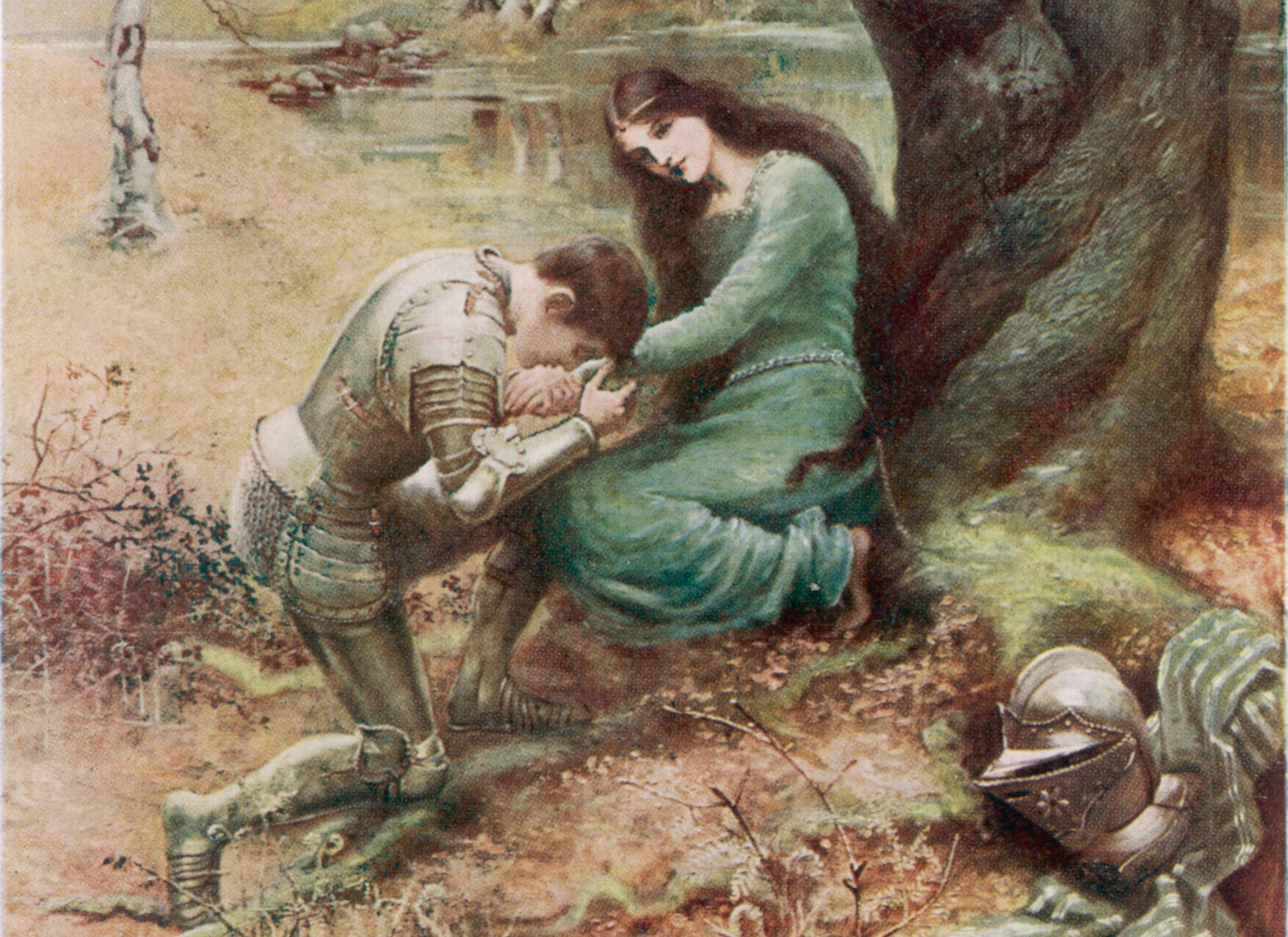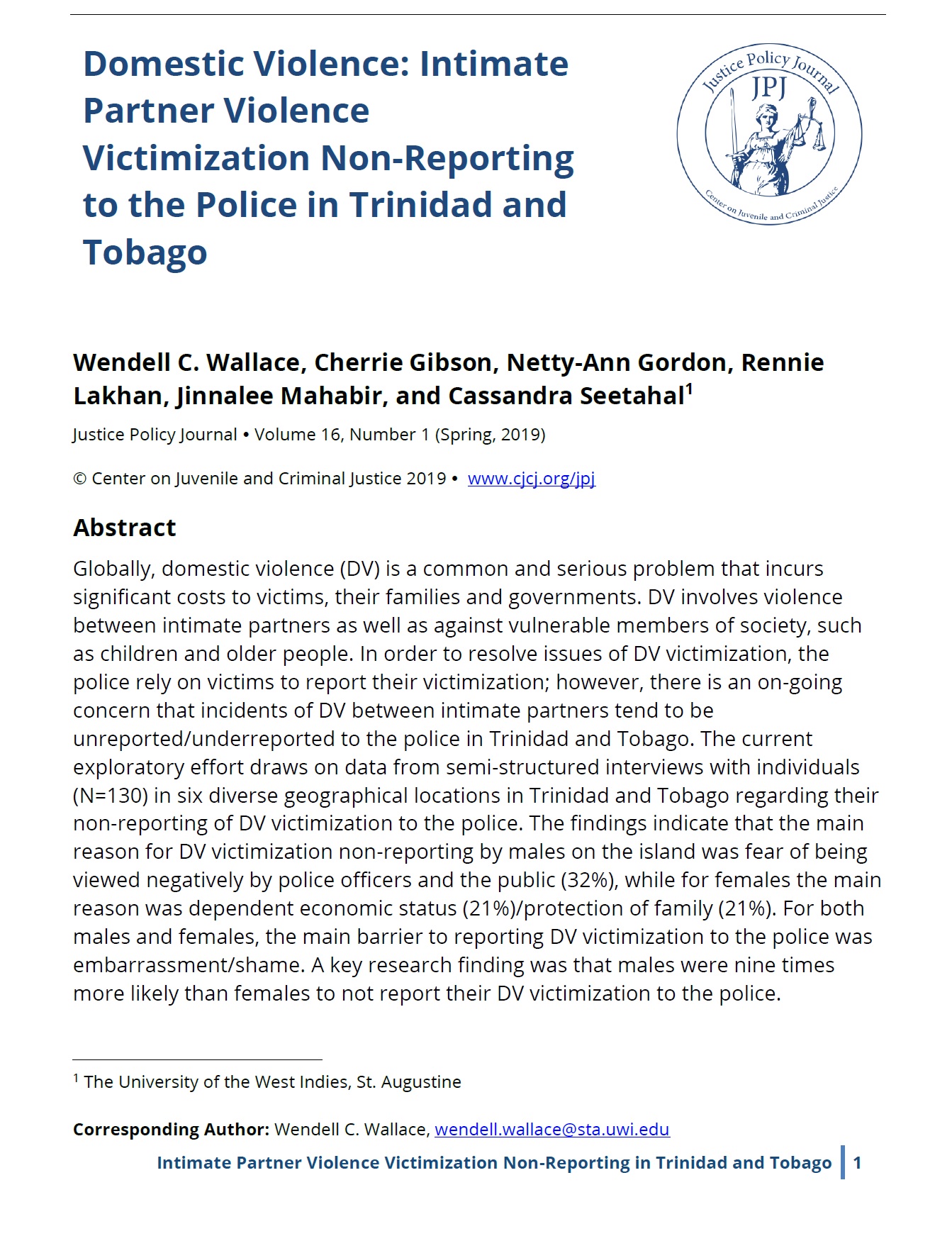
By Peter Ryan
As I discussed in my article on Gynocentrism And The Golden Uterus1, there is a prevailing assertion in the wider gynocentric culture that women are superior to men. The central tenet of this belief system is that because women give birth and are the rate limiting factor of reproduction, they are more biologically valuable than men. The relative biological value of life, and the value of life in general, of males and females, is reduced down to their relative investment in reproduction.
Successfully reproducing offspring is erroneously regarded as having the same outcome as successfully continuing the lineage over generations. At a glance it is easy to see how such an error can be made. It is a fact that any organism must reproduce to pass on its genes. However it is also a fact that any organism must first survive and develop to reproduce. It is also a fact that after reproduction, some degree of parental investment is required for offspring to survive and for reproduction to not become a dead-end.
The problem with stating that ‘women are more biologically valuable to the species than men because they are the rate limiting factor of reproduction’ is that it omits the vast multitude of activities and traits outside of reproduction that contribute to genes successfully passing from one generation to the next. It ignores the reality that biology is comprised of systems. The reproductive role of women is essential (and so is the male reproductive function) to genome propagation, but it is not the only essential role or activity required to get a genome from generation A to generation B or C or D. A number of these other essential activities disproportionately rely on men, such as provision and protection for community survival.
Communities that lose women lose their capacity to reproduce, but communities that lose men lose their capacity to survive. Women might be the rate limiting factor of reproduction, but men are the rate limiting factor of survival. Reproduction cannot occur or lead anywhere without surviving to reproduce and ensuring sufficient numbers of offspring survive. These are the realities that time and time again are ignored and never addressed by those that suggest women are more valuable than men based on the sex difference in reproductive investment. Is it a fact that women are the rate limiting factor of reproduction? Yes. Is it a fact that this is a core driver of biological sex differences? Yes. Does that play a role in driving gynocentrism? Indirectly yes, as it does with most social dynamics between the sexes.
These facts do not then automatically mean the female sex is biologically more valuable (or more valuable in general) than men, or that men are biologically disposable. For those who think I am wrong and remain convinced women are more valuable, and that men are biologically disposable because of differences in reproductive investment, or stick to the fallacious ‘two tribes’ analogy, please read my two part article on Gynocentrism And The Golden Uterus linked here1 and here2.
This article will be focusing on further examining the value of males and females in biological and evolutionary terms and without the gynocentric rose-tinted glasses on. It will also be focused on rectifying common misconceptions floating around in society about the related science which have been promoted by our gynocentric mainstream media and academia to convey a narrative of female superiority.
Certain man haters and female supremacists in the scientific community, and media, make claims like “maleness is a birth defect”3 . Maleness is not a defect. Only the mentally and morally defective would hold such beliefs. Unfortunately for society, such hateful man hating bigots hold senior positions at our universities, in our mainstream media and other institutions. These beliefs cannot be ignored because they reflect the beliefs of too many individuals holding positions of influence and authority in society. This will contribute to undermining the future prosperity and very survival of our society, as civilisation heavily relies on men being in a position to ensure its own existence. I am writing these articles to set the record straight for generations of boys and young men that are being told they are inferior and defective, from every corner of our institutions.
Male Development And Body Size Reflects Male Value
Firstly when evaluating the value of males, we should consider the basic biological characteristics of males. If males were less valuable to the species than females and biologically disposable, then their biology would reflect that. If men were truly biologically disposable, they would resemble the tiny male Anglerfish4 that fuses into the female and becomes an appendage (the linked educational video is an amusing literal illustration of this), or a male worker bee or an ant, or a tiny male spider. Men would be much smaller than women and have a much shorter and less energy demanding developmental period, as they would need to be easily and quickly replaced to be disposable. Their low value would not warrant their biology and life history5 profile, investing time and energy in a large body size or a long developmental period. Human males are larger than females, take longer to develop and consume more energy during development (Teenage males consume whole fridges). Human male biology runs against the narrative men are biologically disposable and less valuable than women. In particular species where there are males that appear to be “disposable”, males develop quickly and have small body sizes.
Fishers Principle
If we are measuring the biological value of the two sexes, then we have to consider the evolutionary forces that shape biology. Biology exists in its current form because of selection for certain traits and genes that increase the number of copies of the genome or genes. The number of copies of the genome (or genes) that exist after a certain number of generations, is a measure of evolutionary success and thus biological value. Value also has to be considered in relation to the entities that invest in that value.
When it comes to the biological value of males and females, we are measuring the number of copies of the genome (or the number of copies of individual genes of the genome) that male and female progeny contribute to their parents, whom invest in producing the male and female offspring. The overall biological value of males and females to their parents is exactly equal. This is because the total number of copies of a genome produced after a set number of generations for parents of males and parents of females, is exactly equal. That is a mathematical certainty by virtue of the fact that every copy of every genome requires one male and one female to produce it. After ten, one hundred, or one thousand generations, parents of males and parents of females leave exactly the same total number of copies of their genome.
This is why the sex ratio at birth is almost 1:1 and there are roughly equal numbers of males and females in the population. The total parental expenditure in producing males and females will be equal, when the total number of copies of the parent’s genome that male and female offspring generate is equal. Parental expenditure is not just the reproduction of males and females, but also all the parental investment incurred in raising offspring. The reason the sex ratio is slightly biased in favour of males at birth, is because of the higher male infant mortality, which leads to a higher production of male offspring to equalise total parental expenditure in males and females. What I have described is Fishers principle6. It is also what evolutionary biologists Dr. Brett Weinstein and Dr. Heather Heying were referring to in this video7, when they were discussing why neither sex is “better” in an evolutionary sense. Biology does not have a favourite between males and females, because they produce exactly the same number of copies of the genome.
If the rate of reproduction is all that matters, then why produce a surplus number of males and why not produce an entirely female population? Fishers principle partly explains why that cannot happen. If parental expenditure in a population for male offspring is reduced and increased for female offspring, then any parent that invests in male offspring will be at an evolutionary advantage. This is because the total number of copies of the genome from investing in male offspring remains exactly equal to the total for investing in female offspring, as one male and one female are required to produce every copy. This means that the lower investment in males produces the same level of evolutionary success as the higher investment in females. Consequently parents that invest in males have a winning strategy, as they get more return from their parental investment in males, or more bang for their buck. Parents that develop a genetic bias to investing in males over females, will thus be at an advantage. As a result, investment in males will rise until the advantage from doing so disappears once parental expenditure is equalised.
The dynamics of Fishers Principle I have just described, is called an evolutionary stable strategy8. When Fishers principle persists in a species and applies, any deviation from equal parental expenditure in male and female offspring either cannot emerge or eventually disappears. This is because it is inefficient to invest more in one sex, when the total evolutionary success of each sex remains the same. People only need to ask the question why half the population is male, to recognise the tunnel vision of people that assert women are more valuable to the species (or vice versa). If that were the case then our biology would reflect that. Instead of having equal total parental investment in males and females, it would be unequal. It is important to note that whilst Fishers principle is very frequently observed, it is not universal to all life. Evolution and adaptation can bypass Fishers principle and drive an uneven investment in male and female offspring. There are species with very uneven sex ratios, or that reproduce asexually.
Fishers principle restricts a species to equally investing in males and females. If evolutionary success is more dependent on females than on males, then sexual reproduction that leads to an equal investment in males and females becomes costly and risky. A greater dependence on one sex in terms of risk, is analogous to putting all your eggs in one basket. It is also costly because you are wasting half of your resources on a sex whose contribution to evolutionary success relative to females, is lower in proportion to the share of parental investment expended on them. Consequently where evolutionary success is more dependent on females than on males and Fisher dynamics are present, there is a selective pressure to either:
A. Develop a method of reproduction that does not rely on males (such as a form of asexual reproduction), so as to overcome Fishers principle and produce entirely females.
B. Develop males that do equally contribute to evolutionary success.
In our lineage and many others where Fishers principle has prevailed, we have gone down pathway B. The constraints of Fishers principle and females being the rate limiting factor of reproduction, generates a sexual selective pressure on males that is proportional in magnitude to the greater reproductive investment of females. This pressure drives the development of traits in males, that are equivalent in biological value to the value of female reproductive investment and the biological value of women. Despite what feminists claim, men do have innate strengths relative to women. Males have a biological value to the species that is equivalent to that of females, it is just a different form of value. These traits do not make men superior to women, just as having a uterus does not make women more valuable than men.
We have had the current Y chromosome derived male in our lineage for over 160 million years9. That is a long time to invest half your genome in a supposedly “disposable” male reproductive vehicle! Dinosaurs walked the Earth and the two supercontinents Laurasia and Gondwanaland had only recently started to break up, when Y chromosome derived males in our lineage first emerged. Males were around even before then in other forms of life for hundreds of millions of years, prior to the Y chromosome form of sex determination emerging.
If men were truly biologically disposable and the rate of reproduction was all the mattered, then at some point in the last 160 million years males would have been removed from the lineage. To illustrate this point, let us assume for the moment that reproductive reductionists are right and that women are biologically more valuable than men because they are the rate limiting factor of reproduction. Over 160 million years there would have been a selective pressure to drive the biology of our ancestors to remove males from our lineage and develop alternative methods of reproduction that rely entirely on females. This is because there would have been a cost incurred from failing to adapt along these lines and a big advantage to avoiding the cost of producing “disposable” males that had little value. Populations that produced asexually would have developed at first by accident and then quickly out-reproduced their counterparts and dominated the future gene pool. Eventually males would have disappeared from the lineage. After more than 160 million years this has failed to occur.
Humans demonstrate equal parental investment in male and female offspring and so have our ancestors over many tens of millions of years. Many species have come and gone, continents have moved and the Dinosaurs have roamed the Earth over the timescale we are talking about. Even in evolutionary terms, there has been plenty of time to develop different reproductive strategies that could have overcome Fishers principle and lead to an entirely female population. Asexual reproduction such as parthenogenesis, which is observed in the natural world, could have emerged in this time frame in our lineage. Why didn’t it? If reproduction matters so much, then why not adopt a far more rapid method of reproduction and have a population entirely of females? The answer is simply that reproduction is not the sole determinant of biological value. That is why our species sexually reproduces to begin with and has males. It is because biological value is not solely determined by the rate of reproduction, that we have males in equal number to females.
Debunking The Nonsense ‘Men And The Y Chromosome Are Disappearing’
There are some gleeful closet dwelling female supremacists and radical feminists in the media and elsewhere, that like to rely on cherry picked research that men will soon disappear because the Y chromosome is supposedly “dying out”. The gynocentric mainstream media has enjoyed promoting this narrative and reporting on it every couple of years. The claim that males and the Y chromosome are disappearing is not supported by most population geneticists, as Dr. Judith Mank explains in her presentation10 at the Royal Institution. Dr. Mank states that due to selection pressures that have acted on and refined the Y chromosome, rather than degraded, “You have a Y chromosome that’s small but quite mighty in its functions”. Of course people would not know that if they read certain news articles that want to twist science to suit an agenda.
The Y chromosome is not disappearing. The size of the Y chromosomes has stabilised and it has not lost a gene for 25 million years11. The Y chromosome has features (such as palindromes) and mechanisms (such as gene conversion12) that enable it repair to itself (see this link13, this link14 and this link15 for more information). Research also shows that purifying selection16 may play a role in maintaining and refining the quality and structure of the Y chromosome. Lastly it has also been found17 that the Y chromosome has genes whose functions extend beyond sperm production, that are active in other areas of the body like the heart and lungs etc and play a role in essential cellular processes important to survival. It is thought that the presence of such important genes on the Y chromosome, may be a further factor in ensuring the integrity of the Y chromosome. Even if the Y chromosome does disappear, there are multiple examples18 observed in other species that males still remain after it is lost and that another chromosome simply takes over the Y chromosomes functions and/or an alternative mechanism of sex-determination is developed.
Linked to this ‘men are disappearing’ myth is a less common but ridiculous narrative that the lower sperm counts of men is evidence that nature is getting rid of males. Firstly the claim that the decrease in sperm counts in men over the last 50 years is going to lead to a male fertility crisis for humans, has been exaggerated and it is unclear such a crisis awaits us. Whilst there has been a large decline in sperm count reported19, it was also stated that men still have 47 million sperm per ml and that this is well within normal ranges. The average male sperm count is well above the 15 million per ml threshold where fertility problems occur20. With that said, that does not mean this is a problem we should ignore and just make idiotic remarks that “nature” is working against men. Despite what female supremacists claim, the available evidence suggests the declining sperm count of men is not due to nature selecting men out of the gene pool, but is actually driven by artificial causes. Prenatal exposure to plasticizers such as phthalates, have been shown21 to negatively affect male fertility. Women are not exempt either from these negative effects. The same plastic chemicals have been shown to also negatively affect female fertility and also their health. See these links here22 and here23 for more information. The claim lower male sperm counts are evidence of nature getting rid of males, has no leg to stand on.
The Male Variance In Reproduction
It is often quoted24, 25 by some that in the past one man reproduced for every two women. I have heard other numbers cited, some higher, some lower. The exact numbers of male and female ancestors that reproduced is still a matter of debate and has likely fluctuated over time and will probably remain uncertain. It is certainly a fact that males show a greater variance in reproductive success than females. When it is quoted that one man reproduced for every two women, it is misunderstood by some people to mean that men contributed only a third of the genome and women the other two thirds. In reality this is not correct. If one man reproduced for every two women, each man that did reproduce, reproduced at double the frequency of their female counterparts. Whilst lower numbers of men may have passed on their genes than women, those men that reproduced did so at a higher frequency than women. So the total contribution to the genome was exactly equal between males and females, but the contribution per male that reproduced was higher than the contribution per female that reproduced. It is a common misunderstanding to confuse the difference in the numbers of men and women reproducing, with the total level of reproduction of each sex. They are not necessarily identical.
It is also incorrect to assert that because more females reproduce than males, females are more biologically valuable to their parents as more female offspring pass on their genes. Whilst a parent may give birth to males that do not reproduce at all, that does not necessarily mean males in general are less biologically valuable than females. Any population that has fewer males reproducing than females, will also have individual males reproducing at a higher rate than individual females. This is a mathematical reality. There are parents of male offspring that pass on their genome at a higher rate than any female offspring in the population. For every male that fails to reproduce, there is another male out-reproducing his female counterparts.
The total biological value of males and females is exactly equal, but there are differences when comparing the distributions of the biological value of individuals of each sex. As we see predictably with so many human traits, women cluster around the mean of biological value with less variance and men are over-represented at both the high and low extremes with greater variance. There are females that are more biologically valuable than males and males more biologically valuable than any female. I will have more to say later on in this article on why the value of male and female life is greater than its biological value and must be regarded as equal.
The Trivers-Willard Hypothesis And The Biological Value Of Men
Fishers principle applies to the population as a whole and the result is that the total evolutionary success and biological value of male and female offspring to their parents as a whole, is exactly equal. However as previously mentioned, there can be deviations within the population when we consider individual males and individual females within the population. Some male offspring leave more copies of their genes behind than females and some female offspring leave more copies of their genes behind than males.
The Trivers-Willard hypothesis (TWH)26 predicts that the sex ratio of offspring can be varied with maternal condition. This is because males show a greater variance in reproduction than females. The number of copies of the genome males leave behind relative to females, can increase and decrease by a much greater degree. Furthermore, the physical and mental condition of male and female offspring affects their reproductive success. Consequently the reproductive success of sons is much more sensitive to the physical and mental condition of sons, than the reproductive success of daughters is to the condition of daughters. If the condition of a son increases, this could lead to a much larger gain in reproductive success than for a daughter, because male offspring can reproduce at a much faster rate and therefore have a much higher limit on how many offspring they can produce. A daughter in good condition might have 10 children and a son in good condition might have 100 children. The condition of offspring will affect their reproductive success and the condition of offspring is affected by maternal condition. As maternal condition affects the condition of offspring (paternal condition does also in other ways) and the condition of offspring impacts the reproductive success of sons to a greater degree, maternal condition has a greater impact on the reproductive success of males than on females.
To illustrate this point, consider a mother in good condition. A mother in good condition could produce a son in good condition that could father 100 children. In contrast, a mother in good condition could produce a daughter in good condition that could give birth to 10 children. TWH predicts that mothers in good condition, will have a sex ratio biased in favour of producing male offspring to maximise evolutionary success. What happens when a mother is in poor condition? A mother in poor condition could produce a son in poor condition, who will be outcompeted by male offspring in good condition and may father only 1 or 2 children or none at all. Conversely, a mother in poor condition could produce a daughter in poor condition, that may still give birth to at least 4 or 5 children. The poor condition of the mother negatively impacts the reproductive success of the son to a much greater degree than it does for the daughter’s reproductive success. TWH predicts that mothers in poor condition, will have a sex ratio biased in favour of producing female offspring to maximise evolutionary success.
Fishers Principle does provide a constraint on the dynamics emerging from TWH. If every mother in the population is in good condition and produces more sons than daughters, or every mother in poor condition produces more daughters than sons, that will bias the parental expenditure in favour of one sex over the other in the population. Fishers principle predicts parents of the rarer sex in such a scenario, will have a higher return on their parental investment (as the total evolutionary success of each sex is equal and is shared between fewer males than females for example). This will eventually lead to an opposing bias emerging, where more of the rarer sex will be produced and the sex ratio will then shift back to equilibrium.
Whilst the population as a whole will have a sex ratio of virtually 1:1, the cohort of the population in good condition will have more sons than average and the cohort of the population in poor condition will have more daughters than average. The sex ratio bias in each cohort will balance each other out and so neither sex is favoured in the population as a whole. Fishers principle will apply to the population as a whole and TWH will predict confined deviations from the 1:1 sex ratio within cohorts of the population based on maternal condition.
What does TWH have to do with male value? Let us assume that biological value is solely or overwhelmingly derived from reproductive investment and women are more biologically valuable based solely on their greater reproductive investment. If this is correct then we would expect parents to be producing daughters in greater proportion than sons, across all values of maternal condition. This is because females always have a greater reproductive investment than males across all values of maternal condition, thanks to females having a uterus and males lacking one. If parents are in optimal condition, then they are free of external pressures and have the resources available to select for whichever sex they prefer. It would then follow they would select for producing female offspring, in such an instance where females were more biologically valuable than males. TWH does not predict this result and neither do the studies27supporting it, instead they show the predicted bias in favour of producing male offspring when there is good maternal condition.
For those that automatically assume that the effect of maternal condition on the sex ratio is proof of women being more valuable than men, there is research showing that paternal condition also affects the sex ratio. Research has found28 that adult male primates higher in the social dominance hierarchy with higher testosterone levels, can bias the sex ratio in favour of producing sons. It is also worth considering that good maternal condition is not important under TWH, unless it leads to sons that are also in good condition and can successfully compete and survive to make full use of their reproductive capacity. Good maternal condition has value under TWH, only if it positively affects the condition of sons.
Whilst the evidence for TWH remains mixed in humans, there is no evidence to demonstrate that production of female offspring is universally preferred over the production of male offspring by parents, on the basis of females being the rate limiting factor of reproduction. Studies that have better measures of parental investment show more support for the TWH, than studies with poorer measures29. Like most aspects of human biology that are based on systems, relative investment in male and female offspring is multifactorial and cannot be reduced down to a single simple mechanism (like women being the rate limiting factor of reproduction). So it is unsurprising that the evidence shows mixed support for TWH.
Where research runs contrary to TWH, it does not support the claim female offspring are selected over male offspring based solely or primarily on greater female reproductive value. A recent study30 of TWH in humans, reported little support for TWH and found women had a stronger psychological preference for having girls and men had a stronger psychological preference for having boys. If females were more biologically valuable than males, both male and female parents would show a preference for having daughters and yet that was not what was observed.
If females were truly more biologically valuable than males, then the bias to favour having female offspring would be deeply biologically ingrained. There would not be communities in China having a disproportionate amount of sons, based on the cultural tradition of wanting to continue the family name31. If all it takes is a cultural tradition of passing on the family name to cause communities to favour sons and skew the sex ratio at birth, then that makes a few claims very questionable and probably wrong. If women were more biologically valuable than men based on their reproductive value, then a preference for daughters over sons would be a universal biological reality with no significant exceptions (certainly not whole communities). No cultural tradition or exception would be strong enough to override such a biological reality, as the bias would exist at such a fundamental level of our nature. Simply wanting to pass on the family name would not stand a chance against such a deeply seated biological bias to favour females, if it actually existed as described.
The Biological Value Of Men That Do Not Reproduce
The number of copies of the genes that male and female offspring contribute to their parents, is not solely determined by their individual frequency of reproduction. It is often said casually by critics of MGTOW (men going their own way), that as these men do not reproduce they will be removed from the gene pool. Of course as predicted, these same people fail to point out that the same reductive reasoning can be applied to many feminists and entitled princesses that also fail to reproduce. The data32 shows that childless women are on the rise. Would anyone dare make the same remarks about childless women as some people do about MGTOW? I don’t think so.
It is also worth pointing out that whilst substantial numbers of MGTOW may not have children, that choice is incidental to men going their own way and very often the result of choosing to not marry women or cohabitate with them. A man going his own way does not automatically translate to a man choosing not to have children, any more than it means having children. MGTOW is a man going his way over gynocentrism and choosing a direction in life based on his choices, rather than winning female approval. Some MGTOW may choose to have children and other MGTOW may choose not to.
The evolutionary reality is actually more complicated than simply asserting that the failure of an individual to reproduce, means a failure to pass on their genes. The number of copies of the genes (or the contribution of the genome) an individual leaves behind, is decided not only by their individual frequency of reproduction, but also by a number of other factors such as:
- The number of their offspring that actually survive to sexual maturity and are in a sufficiently healthy condition to reproduce.
- The number of offspring their relatives produce and survive to sexual maturity in a healthy condition to reproduce.
- The number of offspring genetically similar non-relatives (unrelated individuals that share genetic similarity, will share a certain fraction of genes) produce and survive to sexual maturity in a healthy condition to reproduce.
Concepts like inclusive fitness33 and kin selection34 matter when considering the total fitness and evolutionary success of an individual. It is not just all based on the individual’s personal reproductive fitness. Whilst there are males that do not reproduce, they may still leave copies of their genes behind. These males may directly and indirectly contribute to the fitness of relatives and genetically similar non-relatives. What is often overlooked by many people, is the contribution men make to the survival of their community and the impact that then has on the capacity of the community to reproduce and also care for offspring. Men that do not reproduce but contribute to the survival of their community, can enhance the capacity of their relatives and genetically similar non-relatives to reproduce and care for their offspring and to pass on their genes. As these individuals share similar genes to the men that do not reproduce, the genes of these men can be passed on to the next generation indirectly through other people.
The concept of alloparental care35 is an important example to consider in this context. In our species, adults care for related and unrelated children that are not their direct descendants. Brothers, uncles and cousins etc that may not reproduce, may care for related kin (which was even more the case in our historical and prehistoric past). Male teachers may educate children that are completely unrelated to them. Men running our basic infrastructure and utilities provide essential services that ensure related kin and non-relatives get electricity, food, water, shelter and basic provisions. Men running our military and emergency services, protect and care for relatives and non-relatives. Men inventing, designing, constructing and maintaining our technology, infrastructure and buildings, ensure our economies continue to churn and their innovation ensures the prosperity of our societies. All of what I am describing either directly or indirectly increases the survival and reproductive prospects of relatives of these men and non-relatives that they share genes with. The list goes on and on. These examples are just a small sample of the alternative activities to reproduction, that can contribute to the evolutionary success or total fitness of individual men and allow men that do not reproduce to pass on their genes indirectly through other individuals.
The cooperation between men to ensure the continued existence of civilisation, has been going on for thousands of years and extends all the way back before civilisation to our primitive hunter-gatherer communities. These cooperative efforts between men, increase the number of copies of their genome and genes they leave behind. A man may do hundreds of activities in his lifetime which allow other activities to occur, which then either helps his own offspring survive, or his relative’s offspring, or the offspring of people genetically similar to him. A man who does not reproduce but drives a train carrying food to a local city or maintains the electrical grid, is indirectly contributing to the continuation of his own genes by ensuring his brothers, sisters, nieces or nephews or genetically similar people in that city, survive and reproduce. A male teacher that teaches unrelated children, may educate pupils that go on to improve the prospects of his relatives or individuals that share genetic similarity to him.
The cooperative efforts between men, can also lead to social rewards that enhance their evolutionary success. Cooperation between unrelated men, can enhance the evolutionary success of both of them. This can even apply where one of them does not reproduce. If such cooperation leads to the man raising the social standing of his family in the eyes of the men he assisted, then this may benefit the prospects of his family in the long term and increase the number of copies of his genes that are passed on through other members of his family to the next generation.
Cooperation, altruism and alloparental care are ubiquitous in our species, because evolutionary success is not solely guaranteed by individual reproduction and is substantially dependent on other activities related to survival that often require coordinated social activity. Such social activity very often involves males working together. The dark triad of human nature exists, but so do the better parts of our nature. It was the mass organised cooperative efforts between men, combined with an organised and rule-based (or honour based) form of competition, that enabled civilisation to emerge and harness male value. The notion that natural selection favours survival of the fittest in a dog eat dog world, is an oversimplification of evolution.
Whilst that raw side of our nature exists, human social behaviour is not solely governed by individual evolutionary success and individuals competing against each other. There would be far more violence and no civilisation to speak of, if human males demonstrated little cooperation and had the same level of competition and aggression as male chimpanzees. The same can also be said about there being far more violence and no civilisation, if human males were truly biologically disposable. Civilisation requires sufficient numbers of men in good mental and physical health to support it and to peacefully work together. This in turn requires society to value the worth of men and not treat them as disposable. Male disposability leads to violence, war and in the long term destroys the male value civilisation requires to sustain itself.
Men Are Not Solely Driven To Reproduce
It would be incorrect to assume that men failing to reproduce means they demonstrate no evolutionary success and have no biological value. As discussed, such men can indirectly leave copies of their genes behind through their efforts to contribute to the survival of the community. There has always been a cohort of men in history and prehistory that never reproduced and had no interest in doing so. They used to be called confirmed bachelors. Men choosing not to marry and have children is not a new phenomenon, it has just markedly increased in recent years with the social changes of rampant gynocentrism and feminism.
The simple fact is that if the hypothesis of men filtering themselves out of the gene pool by failing to reproduce was correct, then the significant and growing cohort of men that are choosing to avoid marriage and children would not exist and would never have arisen in the first place. Male lifestyles of any kind that do not lead to having children (religious clergy, confirmed bachelors and many MGTOW) and any deviation from heterosexuality would not exist, if this hypothesis were correct. This is because the hypothesis depends on the assumption that the only way to pass on your genes is to reproduce and consequently that then means that any predisposition to not reproduce, would have absolutely no chance of passing on to the next generation. Consequently after enough time, only males that desire to sexually reproduce with females would remain in the species.
The reality is that childless or celibate and homosexual men that do not desire heterosexual relationships do exist and have done throughout history. Why? The genes of those men were passed down through other relatives or genetically similar individuals. Take religion as an illustrative example. Dr. Brett Weinstein in a discussion36 with Dr. Richard Dawkins pointed out that whilst clergy may not have reproduced, their contribution to their religion may have indirectly furthered their genes. In actively promoting their religion, they may have encouraged behaviours and practices that could have enhanced the evolutionary success of their relatives and individuals within their communities, that they shared genetic similarity with.
We can go through a long list of famous men like Wilbur Wright, Nikola Tesla and Isaac Newton that never married and never reproduced, but made massive contributions to society that led to technological changes that enabled the population size to mushroom from one billion to seven billion in just a few centuries. There are plenty of unknown men that never reproduced that helped build and maintain all of our roads, canals, railways, airplanes, ships, numerous pieces of infrastructure and buildings we all use on a daily basis. There are unknown men that never reproduce, that farm the land and transport our food to supermarkets. Civilisation relies on a massive coordinated effort of male activity to support the current population size and therefore support evolutionary success. This supportive buttressing effect of coordinated male activity on evolutionary success, was also true for our prehistory before civilisation. Reproduction is not the only contributor to evolutionary success.
Whilst the exact numbers of men relative to women that reproduced in our prehistory is a matter of debate, it is generally accepted that there has always been a cohort of men that never reproduced. There has always been an environment where men needed to find another way to live, pass on their genes and contribute to the community, that did not necessarily involve reproduction. There has been a selective pressure on men to develop an alternative pathway to propagating their genes, when reproductive opportunities are limited.
Much has been said about the strong sexual appetite of men in popular culture (the sex drive of men has been exaggerated), which has been generalised to represent the libido of all men. However there is next to no recognition made about the substantial numbers of men that find fulfilment beyond chasing vagina and whom silently immerse themselves in other pursuits. There are men that spend most of their waking hours in a lab doing experiments, or designing a new device, or doing programming, or building a legal case, or running a company, or working in finance maximising their portfolio returns, or building something in their garage. For these men chasing vagina is often a distraction they have very little interest in. They are married to their interests, hobbies and careers. Some men are wired that way. On occasion such men through the achievements they derive from their single-minded focus on such pursuits, may rise in social status, be instead chased by women and sexually reproduce.
Regardless as to whether they end up reproducing or not, it is my view that the cohort of single men finding an alternative pathway in life beyond mating and reproduction, has been a significant factor that has led to the development of our culture as a species. I believe it has also been a significant factor in much of the exploration, invention, research and discovery that led to the emergence of civilisation. I am not the first person to suspect this either. Nikola Tesla said, “I do not think you can name many great inventions that have been made by married men”37.When Wilbur Wright was developing the airplane he said, “I don’t have time for both a wife and an airplane”38.
I am certainly not suggesting married men or men that have partners, cannot invent and I do not believe Tesla was absolutely correct in the assertion that not many inventions were made by married men. However there is some underlying truth to the remarks of these famous inventors. It is a fact that single men are freer to focus on and undertake certain activities than other men, particularly those pursuits that require large amounts of time and require geographical mobility. Men focused on their intellectual, economic, political, artistic and athletic pursuits and that prioritise them over pursuing relationships with women, will generally spend more time on those pursuits and achieve more. These greater achievements can positively affect the survival and reproduction of their community and indirectly increase their own individual evolutionary success (through benefitting related kin and genetically similar individuals) and that of others.
It is also worth pointing out that when men find alternatives to reproduction, intrasexual male competition drops and so does the level of violence in a community when mating opportunities are scarce. This carries benefits to evolutionary success through ensuring a safer environment to raise offspring and more male cooperation. The greater male cooperation leads to greater provision and protection for the community.
There are numerous examples of men that despite being heterosexual, are immersed in other pursuits and for which relationships are a low or non-existent priority. There is likely a neurological and genetic basis to this alternative pathway in life for men, given how lopsided mating prospects may have been in the past and the evolutionary benefits that can be derived from men pursuing activities beyond reproduction. Barbarosaaa had a few things to say in this video39 on the notion of MGTOW being “inherently” unsustainable and that reproduction is all that counts. Yes a society must reproduce to replace itself, but reproduction means little without the prosperity to support the progeny. Furthermore, once society is past a certain threshold, prosperity for a population matters more to evolutionary success than reproduction (As Barbarosaaa’s video discusses).
Single men can contribute to their evolutionary success in ways that can compensate for not reproducing, by contributing to the betterment of their community. The contribution of these men may be incremental across multiple generations in some cases. For some men their legacy on the survival and reproductive prospects of society may be felt in the second, third and fourth generations of their relatives and unrelated but genetically similar individuals. This may lead to a large increase in evolutionary success over the longer term. The impact certain influential men can have on our culture and the downstream effects that can have on evolutionary success, can be profound. Think of all the philosophers, scientists, inventors, soldiers, legal scholars and leaders etc that left no offspring, but improved their cultures and society and enhanced the future survival and reproductive prospects of dozens of generations.
The Value Of Human Life Is Greater Than The Sum Of Its Parts
When we consider males that do not reproduce, we are not considering their evolutionary success in totality if we just look at their lack of reproduction. With that said, it is a reality that men do dominate the extremes of the bell curve when it comes to evolutionary success and biological value. Men and women have equal evolutionary success and biological value overall, but men are over-represented in the highest and lowest values of the distribution. That does not mean that men who have little evolutionary success are less valuable as human beings, or that men with the highest level of evolutionary success are more valuable than everyone else.
The mentally disabled and the elderly are not regarded as less valuable human beings because they have less potential evolutionary success than the general population. We correctly recognise that the value of human life transcends biological value. Why? Civilisation requires that we respect the value of human life, regardless of the inherent characteristics of that life. This is an essential part of our culture, because it allows us to cooperate and be civil and fair with each other. Reducing the value of human life down to biological value, is a very destructive way of regressing civilisation to violent and barbaric tribalism. There are numerous historical examples of science being used to argue certain groups are subhuman or inferior to justify extermination, sterilisation and the use of eugenics.
Civilised societies that regard the value human life as sacrosanct, tend to be safer and more prosperous. Consequently, they generally do better in passing on their genes than primitive tribal shitholes. Of course all of this basic logic and fact is completely lost on those that want to wilfully ignore the value of men and promote gynocentric double standards based on a narrative that having a uterus makes you a more valuable human being. The value of human life whether it is male or female, is greater than its biological value. The inherent value of all human life must be regarded as equal and not be ranked based on the sex or race etc of the individual. Anything less than that leads to tribalism, social dysfunction, dehumanisation, exploitation and violence. Given enough time any form of implied or overt sexual superiority, leads to mounting social and economic consequences that eventually destroys civilisation.
In part two of this article I will be debunking further sophist arguments that men are biologically less valuable than women and are biologically disposable.
References:
- https://www.avoiceformen.com/gynocentrism/gynocentrism-and-the-golden-uterus-part-one/
- https://www.avoiceformen.com/gynocentrism/gynocentrism-and-the-golden-uterus-part-two/
- https://www.npr.org/sections/13.7/2015/04/16/400075715/is-it-sexist-to-say-that-women-are-superior-to-men
- https://www.youtube.com/watch?v=J4LPmjQoc_A
- https://en.wikipedia.org/wiki/Life_history_theory#Life_history_strategies
- https://en.wikipedia.org/wiki/Fisher%27s_principle
- https://www.youtube.com/watch?v=iOd0hnmFR3c
- https://en.wikipedia.org/wiki/Evolutionarily_stable_strategy
- https://www.ncbi.nlm.nih.gov/pubmed/18463302
- https://www.youtube.com/watch?v=En26p6GvtHw
- https://www.nature.com/news/the-human-y-chromosome-is-here-to-stay-1.10082
- https://en.wikipedia.org/wiki/Gene_conversion
- https://theconversation.com/the-y-chromosome-is-disappearing-so-what-will-happen-to-men-90125
- https://www.ncbi.nlm.nih.gov/pmc/articles/PMC5591018/
- https://www.sciencedaily.com/releases/2019/02/190206200336.htm
- https://journals.plos.org/plosgenetics/article?id=10.1371/journal.pgen.1004064
- https://www.nature.com/news/reprieve-for-men-y-chromosome-is-not-vanishing-1.15103
- https://en.wikipedia.org/wiki/Y_chromosome
- https://www.nytimes.com/2017/08/16/health/male-sperm-count-problem.html
- https://www.healthline.com/health/mens-health/normal-sperm-count
- https://www.sciencedaily.com/releases/2018/03/180318144858.htm
- https://www.nutritionaction.com/daily/food-safety/phthalates-linked-to-lower-fertility-in-men- and-women/
- https://www.hsph.harvard.edu/news/features/phthalates-exposure-pregnancy-loss-gestational-diabetes/
- https://www.avoiceformen.com/sexual-politics/marriage/a-voice-for-men-mgtow-central/
- https://psy.fsu.edu/~baumeisterticelab/goodaboutmen.htm
- https://en.wikipedia.org/wiki/Trivers%E2%80%93Willard_hypothesis
- https://journals.plos.org/plosone/article?id=10.1371/journal.pone.0004195
- https://journals.plos.org/plosone/article?id=10.1371/journal.pone.0209640
- https://www.rbmojournal.com/article/S1472-6483(10)60546-9/fulltext
- https://www.nature.com/articles/s41598-018-33650-1
- https://www.youtube.com/watch?v=P7CSzmibhic
- https://www.independent.co.uk/life-style/childless-women-on-rise-more-than-ever-before-fertility-crisis-menopause-career-study-reveals-a7882496.html
- https://en.wikipedia.org/wiki/Inclusive_fitness
- https://en.wikipedia.org/wiki/Kin_selection
- https://en.wikipedia.org/wiki/Alloparenting
- https://www.youtube.com/watch?v=hYzU-DoEV6k
- https://www.goodreads.com/author/quotes/278.Nikola_Tesla
- https://www.goodreads.com/quotes/2194952-i-don-t-have-time-for-both-a-wife-and-an
- https://www.youtube.com/watchv=6fMSi5Bmiz4&list=PLhjY9EeoPa5mrvwFqe40ZOIE5vaTUuuTo&index=3










